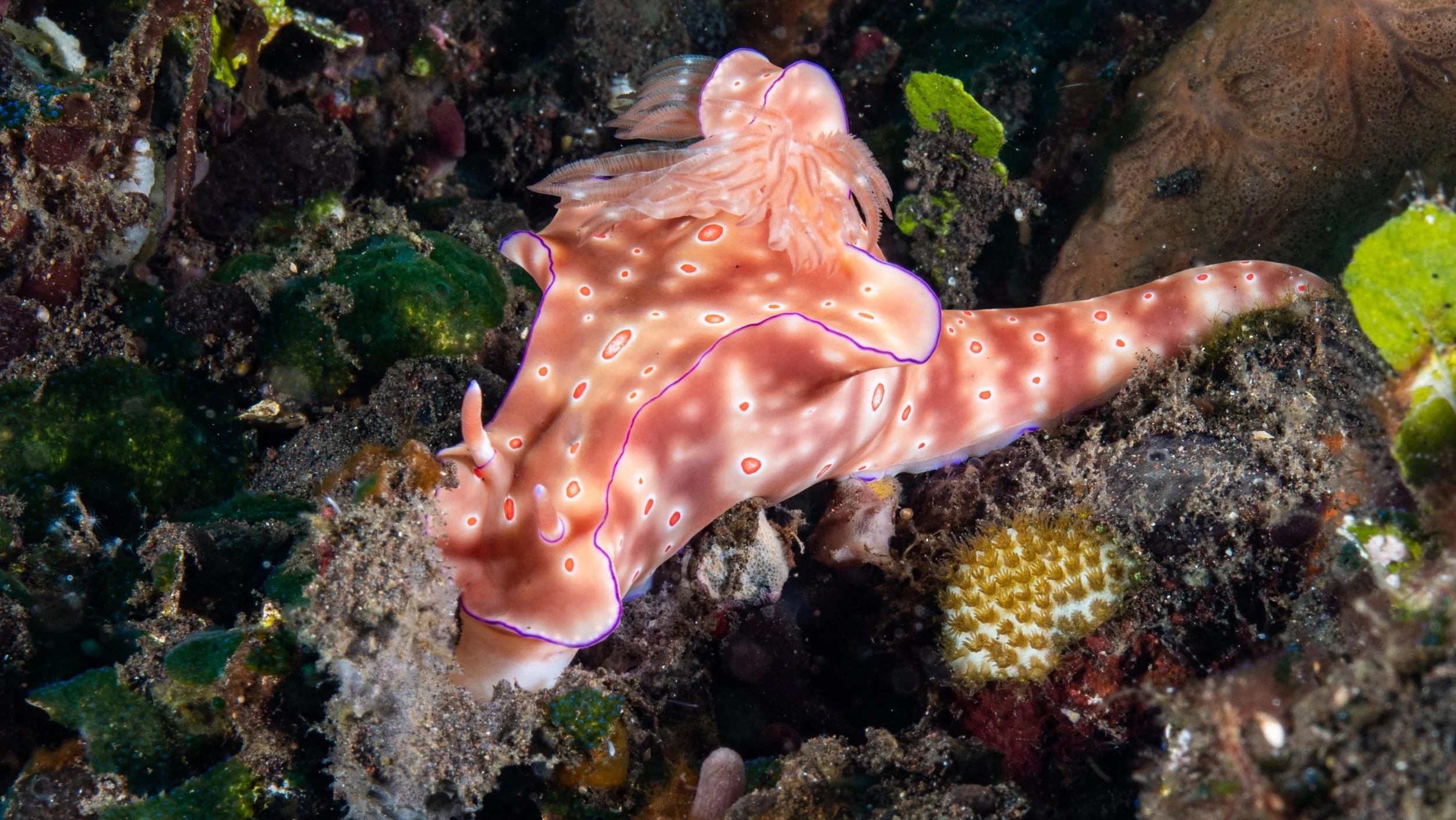
A collection of nudibranch macro photography from around the world.
The Gold Lace nudibranch (Halgerda terramtuentis) is a small sea slug found throughout the Hawaiian Islands. It diurnal nature makes it easier to spot and photograph on dives. It loves rocky areas and if you look closely at the orange sponges that line cave walls and ceilings, you have a good chance of seeing it having its favorite meal. - Big Island, Hawaii
Ceratosoma trilobatum is a type of dorid nudibranch. Nudibranch means naked lungs and it refers to the gills of these slugs being on the outside of the body. You can see this nudi’s gills in the middle of it’s body. -Tulamben, Bali
The piece of flesh above the gills is a horn. This is thought to be an anti-predator adaptation. All the foul-tasting chemicals that the sea slug ingests from eating sponges are stored in that horn. When threatened by a predator, the horn wiggles and attracts the bite of the hungry fish, who gets a nasty tasting surprise. -Tulamben, Bali
Hypselodris tryoni is a medium sized dorid nudibranch that is found throughout the South and Central Pacific. They feed mostly on sponges. The cool thing about Hypselodris tryoni is that they are known to exhibit trailing behavior. One slug will follow closely behind another- head to butt just like these two, sometime with as many as four slugs in a row. -Tulamben, Bali
Nudibranchs are similar to the snails you may find on land. They are a shell-less, marine gastropod. There are many different species throughout the world. Ones like this dorid are thought to feed on purple sponges that commonly grow on mussel shells. -Karukinka, Patagonia





